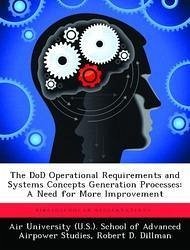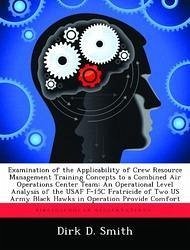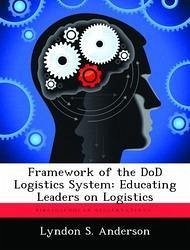
The Dod Operational Requirements and Systems Concepts Generation Processes
A Need for More Improvement
Versandkostenfrei!
Versandfertig in über 4 Wochen
52,99 €
inkl. MwSt.

PAYBACK Punkte
26 °P sammeln!
Operational requirements generation and system concepts generation are the crucial processes by which the US decides what weapon systems it needs to develop and acquire to sustain the military national instrument of power for the sake of achieving national security objectives. This paper asserts that the current operational requirements and system concept generation processes can and should be significantly improved. To develop that assertion, the paper examines the evolution of the processes since the President's Blue Ribbon Commission on Defense Management (the "Packard Commission") made its...
Operational requirements generation and system concepts generation are the crucial processes by which the US decides what weapon systems it needs to develop and acquire to sustain the military national instrument of power for the sake of achieving national security objectives. This paper asserts that the current operational requirements and system concept generation processes can and should be significantly improved. To develop that assertion, the paper examines the evolution of the processes since the President's Blue Ribbon Commission on Defense Management (the "Packard Commission") made its recommendations in 1986. Examining this evolution reveals fundamental problems that have been alleviated to some extent by recent reforms but remain to such a degree that further improvement is warranted. Therefore, this paper makes six major recommendations for improving the operational requirements and system concepts generation processes. First, the DOD should fully institutionalize the strategies-to-tasks hierarchy to establish and maintain adequate links between national objectives and DOD budget requests. Next, the strategies-to-tasks hierarchy should be the basis for a master road map of future defense requirements and operational concepts to achieve better long- range defense planning. Third, the DOD should vest Milestone 0 approval authority in the Joint Requirements oversight Council (JROC) instead of the Defense Acquisition Board (DAB). This would streamline as well as increase CINC representation in the operational requirements process. Fourth, the Mission Need Statement (MNS) should be a pure requirements document with no place for potential solutions as is currently required. Formulation of potential solutions should be saved for the subsequent system concepts generation. Further, and fifth, the JROC should review all MNSs for Milestone 0 approval, not just those MNSs that the originators believe might lead to the largest of major acquisition programs.












